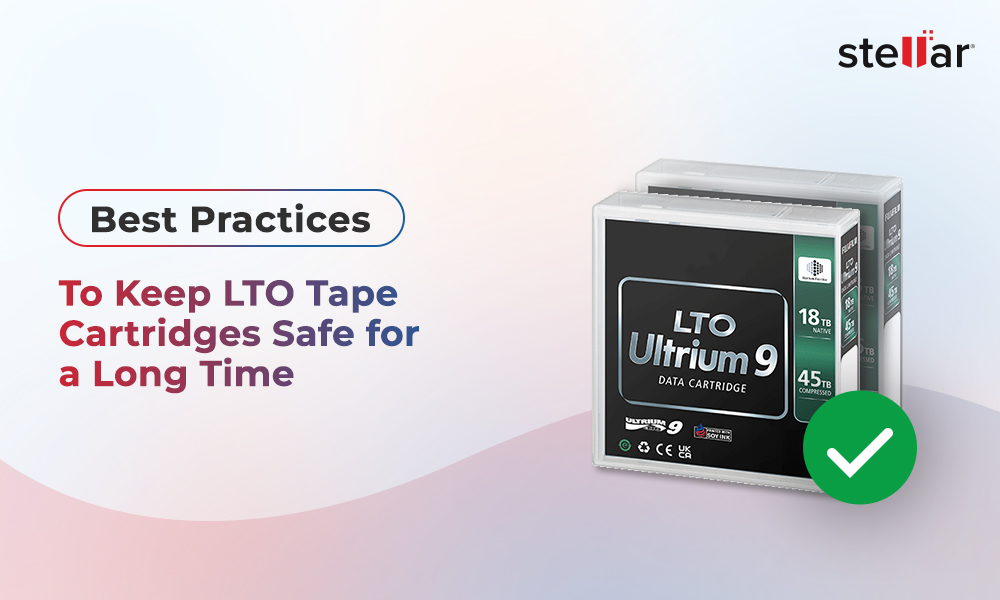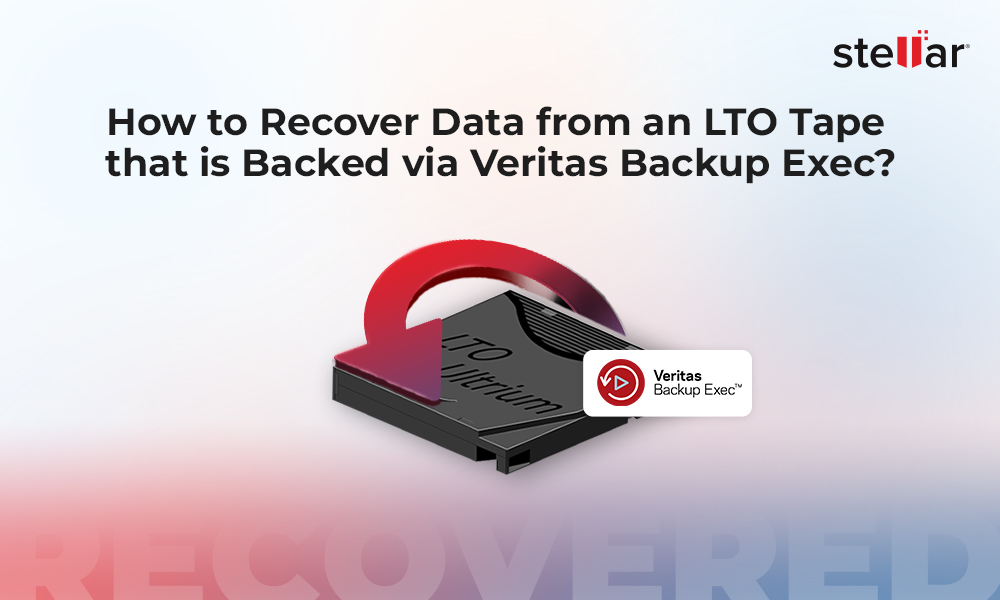With the advent of sophisticated storage technology like SSDs and cloud-based storage, most people arguably suggest that tape backup drives have become redundant.
Some radical advocates of innovation go to the extent of claiming that Tape storage technology is dead. However, it's not entirely correct.
Most organizations that have to deal with huge data volume or store data for legal or other compliance purposes prefer tape drive storage for backup.
Moreover, tape storage's cost-effectiveness and reliability are other factors that make it relevant even today.
We will discuss the best practices to maintain backup tape cartridges and drives for secure and prolonged usage of this device and the safety of its data.
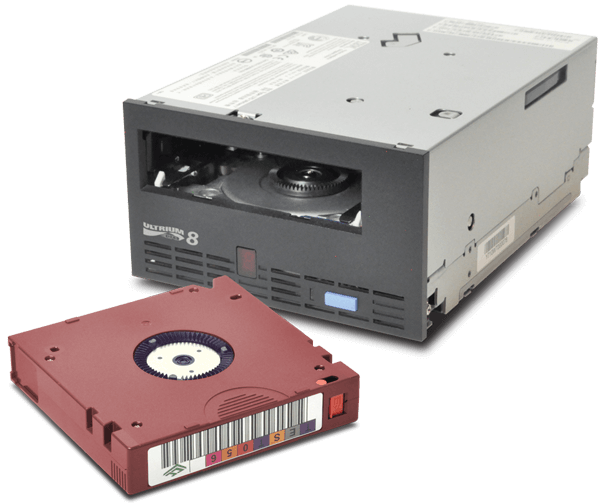
Advantages of taking backup on tape drives
Some of the top advantages of taking backup on tape drives are:
- Convenient Storage: Most LTO tapes offer relatively larger storage space and are quite compact. Such tape cartridges can easily hold even enterprise-level data, and organizations are saved from maintaining large rooms for hardware storage.
- Economical Option: The average storage cost of LTO tapes is around $ 0.02 per GB, which is significantly low compared to the $ 0.30 per GB for SSD and $ 0.033 per GB for HDD. Evidently, the tape cartridges are the most economical data storage option today. (Data Source – forbes.com)
- Easy Replication: Replicating a tape cartridge is very easy, and users can comfortably make physical copies of their critical backups. Moreover, the tape cartridges have an encryption option for enhanced safety, making the data stored on them secure from unwanted access.
- Better Reliability: Tapes are not easily prone to physical or electronic damage and can remain intact not for months or years but decades. The media stored on tapes is not vulnerable to decay or corruption. But, they must be shielded from exposure to high humidity or extreme temperatures.
There are many more advantages to tape backup, but the above are core reasons why organizations still choose to back up their valuable data using Tape drives.
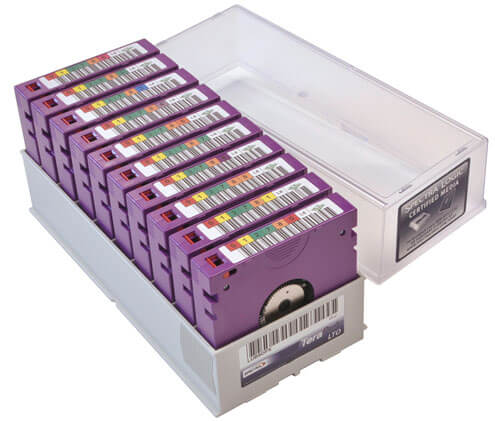
Best Practices for tape backup drives
The best practices for maintaining backup using tape cartridges are more like the standard norms, and every user should try to abide by them.
Following some standard precautions and care instructions help you enhance the life of the tape cartridge and secure your data against any threat- natural, physical, and logical. Here are some of the practical protocols that you must follow.
Maintain onsite and offsite copies of every tape backup
It's always advised that a backup should never be kept in a single copy. Most organizations follow the practice of storing their backup tapes in an offsite location.
It's done to counter the possibilities of data loss in case of any mishap to the main site. In such a scenario, the data remains secure at the offsite location.
However, most users ignore the practice of keeping a copy of the offsite tape drive at the site where data is being created and backed up.
You should keep a copy of the backup both onsite and offsite.
Choose a strategic storage location for a backup tape cartridge
The offsite location to store the backup tape cartridge should be chosen with all the factors in mind like accessibility, environmental differences, distance, frequency of demand of backup, etc.
The offsite location must not be in close proximity to the actual site, as any natural disaster may affect both sites alike. Therefore, there is no practical benefit to maintaining an offsite storage facility.
Similarly, the backup tapes must not be stored too far away to make them difficult to be accessed in time.
There must not be excess dirt, dust, or extreme temperature at the storage site as it may damage the tapes.
Moreover, if you frequently need to access the backup, it should not be placed too far from your location.
Comply with the tape storage norms
You should ensure compliance with the norms for favorable storage of tape cartridges.
The environment of the storage facility must be carefully controlled to avoid direct exposure to dust, humidity, high temperature, etc.
There should be adequate ambiance control, security, fire resistance, and waterproofing arrangements.
There should not be any running machinery that may produce dust, smoke, paper particles, or other contaminating agents.
The storage area should be kept at a safe distance from areas with high mobility like hallways, elevators, escalators, and stairways.
Schedule a regular cleansing of tape drives
As the dust and dirt accumulation may cause damage to the magnetic tape, it's necessary to prepare a plan for regular cleaning of the drives, cartridges, and storage area.
A routine should be set, and the responsibility shall be clearly defined for maintaining the tape backup drives in a clean and contaminant-free state.
Maintain records of all offsite tape cartridges
The organization should maintain a clearly defined record of all the backup tape cartridges to keep a check on mismanagement and accidental loss of cartridges.
Again, the responsibility of keeping a record should be designated to a particular person or department, and a regular audit should be done to keep things in place.
Large organizations apply the barcode method to keep organized records of all the tape cartridges and drives.
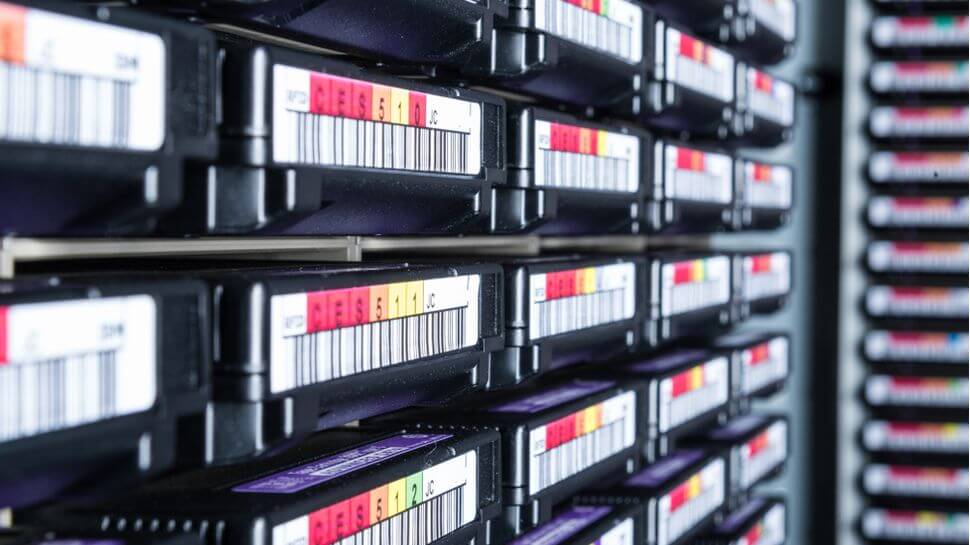
Keep inventory of tape drives to avoid last-minute panic
If you have been using tape cartridges to back up your institutional data, you should keep an inventory of cartridges.
It helps avoid the rush and comes in handy for emergency or instant backup needs. In addition, you can club the inventory and record maintenance into a single task to reduce complexity.
Here again, the barcoding might help you have a quick idea of the inventory items.

Schedule a regular recoverability test for the tape drive
To safeguard the data stored on tapes, it is better to check the recovery condition of tapes from time to time.
In case any anomaly is observed during testing, you can immediately recover the data from the tape drive and secure it on another device.
As the life of tape cartridges is sufficiently long, you can safely go for an annual recoverability check, given that you are equipped with a good tape recovery software.
Plan backup frequency to suit your business needs
Every organization has its own pace of producing data, and accordingly, the backup needs for each organization vary in terms of frequency.
You should chalk out the frequency at which your organization's data must be backed up onto the tape drive. It will streamline your backup program and enhance data security.
Practice utmost care while using tape drives
You should act with utmost care while inserting the LTO tape cartridges into the LTO reader drive or ejecting it after use.
Tapes are quite easy to break, and sometimes if you eject the tape cartridge in haste, the tape might get stuck and broken.
Moreover, the drive itself is a sophisticated machine, and rough usage might lead to a fault in the module alignment mechanism or other critical components, rendering it unable to read the tapes correctly.
Insert and eject the tape cartridge with patience and do it delicately to avoid damage to the drive and the cartridge.
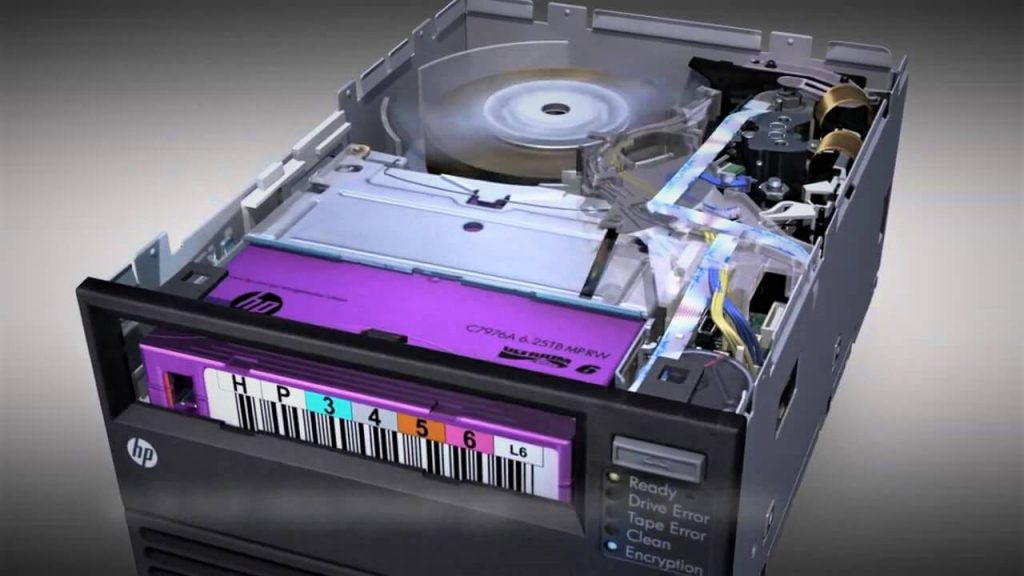
Secure your network and systems with a reliable antivirus
As the data stored on tape drives is generated from your systems and network, you must ensure that they are free of any malware or virus.
Any virus threat present in your system threatens the integrity and safety of your entire backup, and it can cause corruption and damage to the data stored on tape.
You must install a reliable antivirus that can provide comprehensive security to your organizational systems and network from any unknown threat.
Strictly regulate access to backups
Frequent handling of the tape cartridges makes them prone to error and damage due to exposure to an uncontrolled environment.
The access to the backup tape storage must be limited to only a relevant group and monitor each access keenly.
Allowing free access to tape backup drives may pose a threat to the storage area and tape on which your valuable information is stored.
What to do if the tape backup drive fails?
The data is stored in a sequential manner on the tape cartridges, i.e., any data stored on tape can be accessed linearly.
For example, if you have to access the data of block 3, you must first go through blocks 0, 1, 2, and then access block 3.
This might be taken as one of the serious drawbacks of tape backup drives as it makes the accessibility quite slow compared to HDD, SSD, or cloud storage.
Furthermore, if any of the blocks are corrupted, it may render the whole tape backup inaccessible. In such a case, you need to recover the data stored on tape using reliable and secure data recovery software.
You can easily recover and extract the data from a failed cartridge using the Stellar Data Recovery for Tape.
The software supports almost all LTO tape drives and can extract data inserted on tape through Veritas or Symantec utilities.
If you need to recover data from old LTO tape drives, Stellar Data Recovery for Tape provides an easy way to do so.
The DIY tool has an interactive and simplified UI and needs basic knowledge of tape backup drives.
To keep the data on your tape unaltered, the software creates an image of the drive and uses it to recover the data.
The created image is thoroughly scanned, and all the data found is displayed in a tabular format. You can easily preview the recoverable data and save it on the system or any other storage device.
You might come across other software claiming to be a data recovery software for LTO tapes, but they are only limited to creating images and can't extract the data from the created image.
So, Stellar Data Recovery for tape is the ultimate and only solution to your tape data recovery needs.
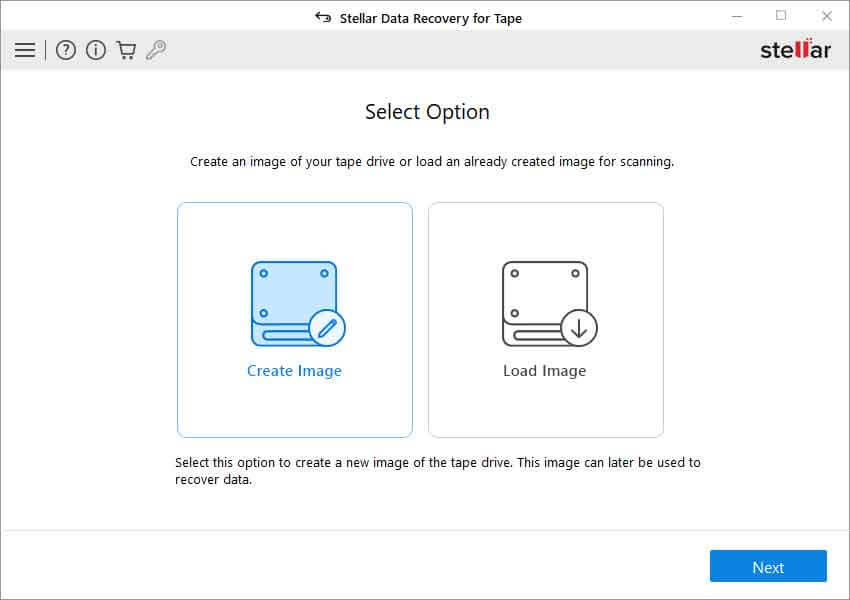
Conclusion
The active life span of tape cartridges is small (approximately 300 cycles), making them fit for archiving purposes only. Moreover, it would be best if you abide by the regulations defined for backup tape storage to keep them in a usable condition.
We have enumerated the most relevant best practices to maintain tape backup drives and ensure that following these practices will surely help you enhance the security and usage of tape storage and related elements.












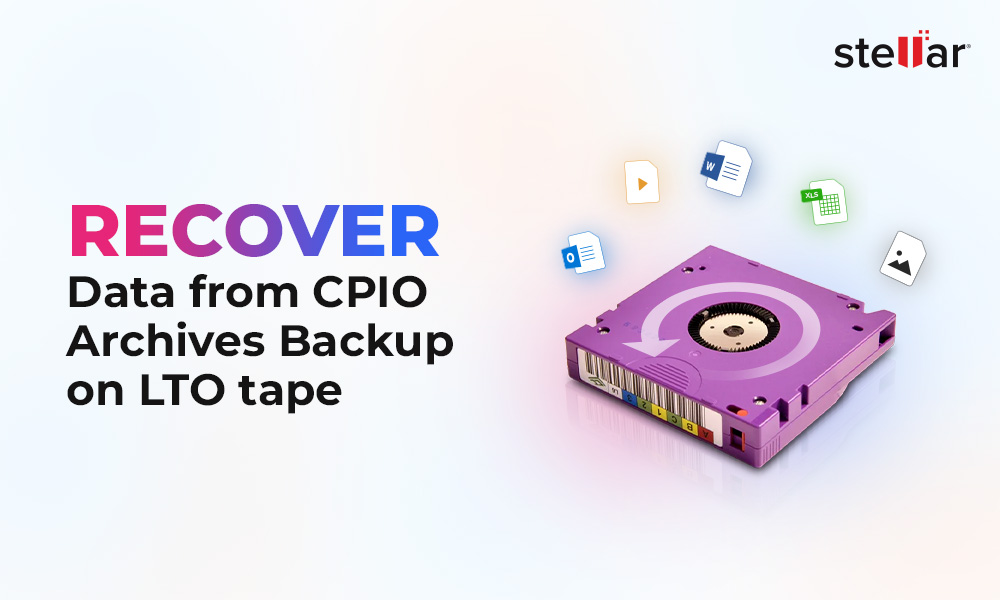
 6 min read
6 min read